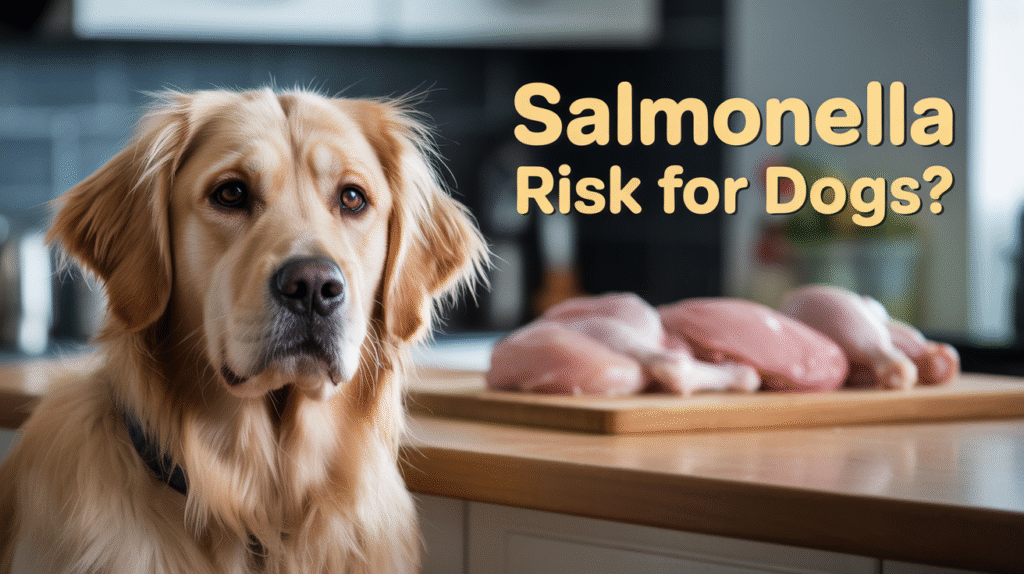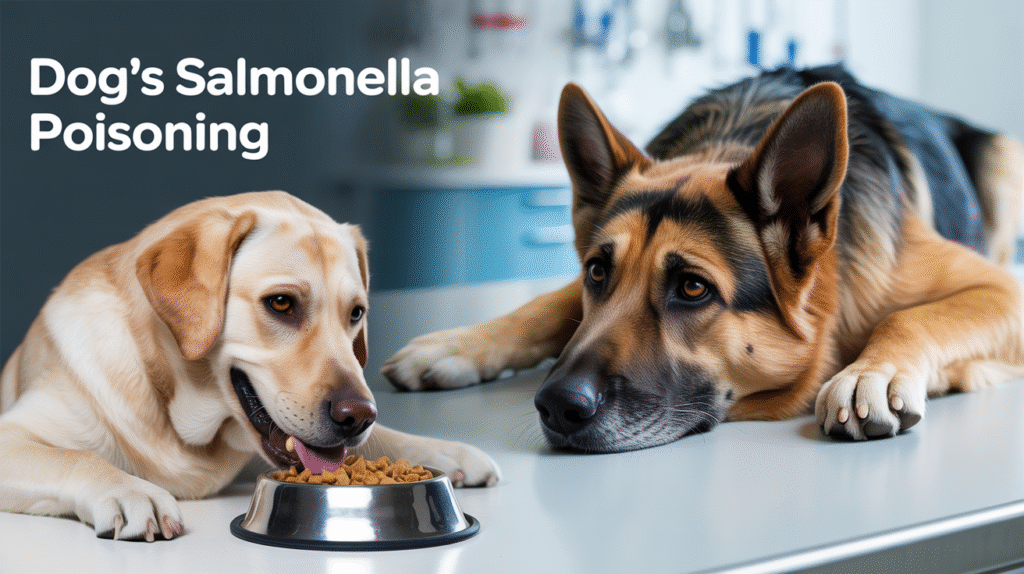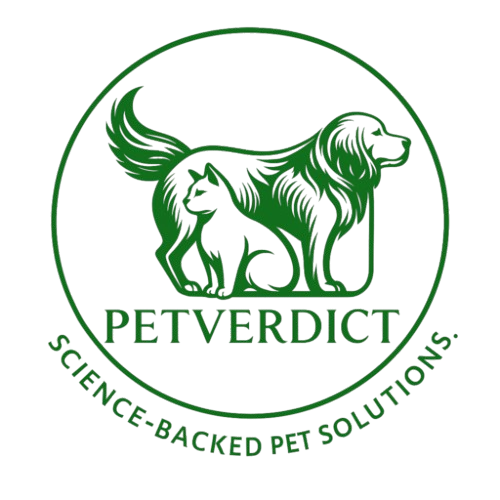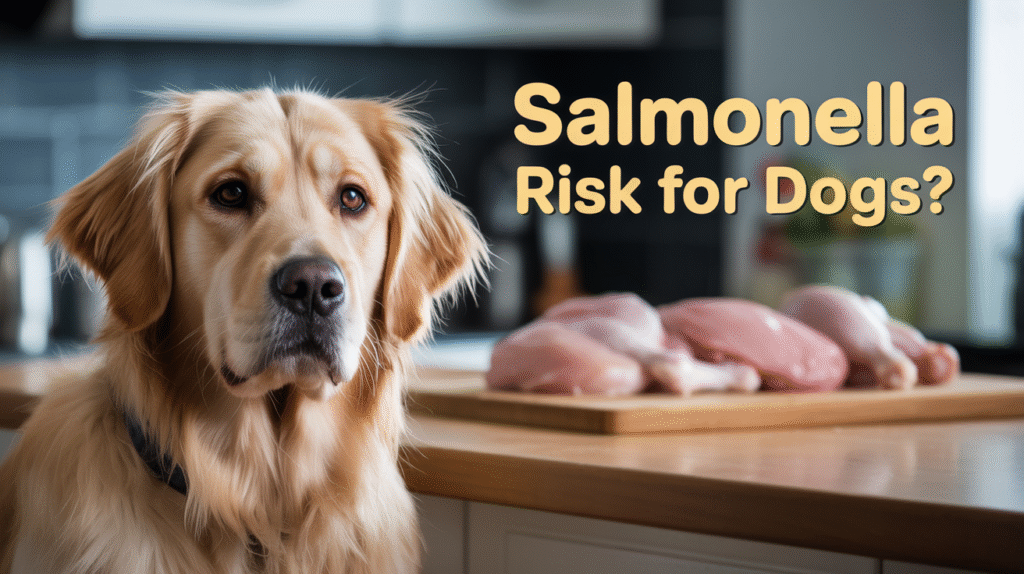Salmonella poisoning in dogs occurs when pets ingest the bacteria, leading to gastrointestinal upset and other health issues. It may be caused by contaminated food, raw diets and even exposure to infected animals. Warning signs can be manifested through vomiting, diarrhea, fever, and lethargy that demand immediate veterinarian care. Here’s what you need to know about how salmonella poisoning dogs. Good food hygiene, frequent vet visits and knowledge of your dog’s surroundings all help diminish risk of infection. In the sections below, we’ll break down causes, symptoms, treatment and prevention to keep your furry friends safe from salmonella.
What is Salmonella Poisoning in Dogs?

Salmonellosis or Salmonella poisoning in dogs is a Salmonella bacteria infection. The main culprit here is Salmonella spp, which has a number of serovars that can plague dogs. These bacteria can cause severe intestinal upset and systemic disease, posing a health threat. Surprisingly, certain dogs can be asymptomatic carriers of the bacteria, which makes it difficult for pet owners and vet to detect.
1. The Bacteria
Salmonella is a bacteria that can afflict many species of animals, dogs included. Most notable strains include S. Enterica, which has serovars that are pathogenic. These strains can have virulence factors that determine how sick a dog get from infections. Human-to-human transmission of salmonella can occur if proper food handling or hygiene isn’t followed.
2. The Infection
Dogs usually become infected by salmonella by eating contaminated food or coming into contact with infected animals. Typical culprits are raw chicken and dried pig ears, which can carry the bacteria. The incubation period is generally within 72 hours. Puppies and older dogs with compromised immune systems are even more at risk of becoming seriously ill. Salmonella is zoonotic, meaning it can spread between species, putting both dogs and people at risk.
3. The Disease
Salmonella infections have mainly gastro-intestinal clinical signs. Acute salmonellosis involves bloody diarrhea, frequently with fever and abdominal pain. In more serious instances, the organism may result in systemic illness, such as septicemia. Dogs that are vomiting and are unable to keep down food or water need to be treated immediately before progressing toward shock or uncontrollable weight loss.
4. The Carrier State
A salmonella carrier is a dog who possesses the bacteria but shows no symptoms. This condition is especially concerning for owners, as such dogs are capable of shedding the bacteria in their stool, potentially infecting other animals and humans. Tracking carrier dogs for any symptoms of sickness is important. Strict sanitation procedures need to be instituted to control these vectors and prevent infection in the community at large.
How Dogs Get Salmonella

How Does My Dog Get Salmonella? Knowing these routes is important for pet owners to reduce dangers.
Raw Diets
Raw meat diets can be dangerous for dogs. Raw chicken and other animal products frequently contain salmonella bacteria. One 2017 study found that 2.5% of dogs tested had salmonella in their gastrointestinal tract, many asymptomatically. This underscores the danger of transmitting the bacteria asymptomatically.
Poultry is just one of the most infamous foods to get salmonella. Raw meat that is not handled and prepared properly can cause cross-contamination in the kitchen. Pet owners must be safe food handlers — wash your hands and surfaces after dealing with raw meat. When it comes to raw diets, the health consequences are key–salmonella risk can dominate any possible advantage.
Contaminated Items
A lot of ordinary things can give your dog salmonella. Contaminated pet food and treats, for example, tend to be common offenders. Cross-contamination happens when bowls and utensils aren’t cleaned properly. Dog lovers should be on the watch for food recalls due to salmonella contamination as this could impact their 4-legged friend.
Keeping feeding areas clean. Maintaining clean food and water bowls on a regular basis and properly storing treats is one such way. Taking action with food safety goes a long way toward limiting salmonella exposure.
Environmental Exposure
They can even get it by catching it from infected animals and environments. Outdoor activities like going to a park or being around wildlife are dangerous as well, particularly if dogs come across infected animal feces, such as that of stray dogs.
Supervising dogs in public areas is important to reduce exposure. Infected wildlife may be the culprit as they may be asymptomatic carriers. Pet owners need to be aware of their surroundings and keep their dogs from sniffing or licking areas that could be contaminated.
Symptoms of Salmonella Poisoning
Symptoms of salmonella poisoning usually develop 3 to 5 days after ingestion of the bacteria and can vary greatly depending on the dog’s health and immune system. The following are common symptoms associated with salmonella poisoning:
- Acute diarrhea
- Vomiting
- Loss of appetite
- Fever
- Lethargy
- Dehydration
- Blood in stool
Immediate identification of these symptoms is critical, as early vet care can make all the difference. What’s tricky with this pathogen is that some dogs can be asymptomatic, making diagnosis and treatment difficult.
Digestive Distress
Salmonella poisoning in dogs’s hallmark sign is acute diarrhea, and your dog will probably be making frequent trips outside. This diarrhea can be chronic, lasting in excess of 3-4 weeks and can range in severity.
Vomiting usually ensues along with the diarrhea, exacerbating the dog’s state and resulting in a considerable loss of appetite. Dehydration can become a real concern when these symptoms are bad enough.
It’s crucial to watch for bloody diarrhea in particular, as it suggests a more serious infection that could necessitate aggressive therapy.
Systemic Illness
Salmonella may cause a systemic disease in the form of a protracted fever and malaise. Septicemia and shock can occur in serious cases, which can be fatal.
It’s the immune response which controls these systemic symptoms. If you note any systemic symptoms, it’s important to get to the vet as soon as possible to prevent complications.
Hidden Infection
Even asymptomatic dogs can carry salmonella. This secret infection is tricky, especially in multi pet homes where it’s easily spread.
These symptoms can be difficult to diagnose as they often stem from unseen infections, which is why regular veterinary examinations are so important. Being aware of the threat of asymptomatic carriers is a must-have in responsible pet ownership.
The Veterinary Diagnosis
How to Diagnose Salmonella Poisoning in Dogs Diagnosing salmonella poisoning in dogs requires a methodical process incorporating clinical examination, laboratory testing, and differential diagnosis. All are important in verifying the infection and instituting treatment.
Clinical Evaluation
Veterinary diagnosis begins with an initial clinical examination during which vets collect the dog’s medical history and evaluate symptoms. Crucial questions are recent dietary changes or exposure to other animals, as these aspects can play an important role in diagnosis.
This is followed by a complete physical examination, including attention to the dog’s general condition. Dehydration or abdominal pain are symptoms of a severe illness.
Vomiting, diarrhea (often bloody), fever and lethargy are common presenting symptoms that may raise suspicion of salmonella infection. Owners should give a detailed history of their dog’s diet and possible exposure to tainted food or environments.
| Step | Action |
|---|---|
| 1 | Gather health history and symptoms |
| 2 | Conduct physical examination |
| 3 | Observe key clinical signs |
| 4 | Collect detailed dietary and exposure history |
Laboratory Analysis
Laboratory testing is necessary to confirm a salmonella infection. Fecal cultures are the number one tests, as they isolate the bacteria from the dog’s stool.
To be able to identify specific salmonella serovars is very important as different type may need different treatment. Blood tests can measure the immune response to the infection, informing severity and management.
Prompt lab work is essential. Delays may result in a progression of symptoms and make treatment more difficult.
Ruling Out Others
It is similarly crucial to exclude other causes of gastro-intestinal symptoms. How do vets tell salmonella apart from e coli or parvo?
Thorough diagnostic testing supports salmonella as the etiology. By combining efforts, pet parents and vets are essential in a collaborative approach leading to diagnosis that covers all the bases.
Treating Salmonella Poisoning
Managing salmonella poisoning in dogs involves a variety of supportive care measures and treatments tailored to the severity of the infection. Below is a breakdown of treatment strategies that can assist in recovery.
Supportive Care
| Supportive Care Measure | Description |
|---|---|
| Withhold Food | Stop feeding your dog for 48 hours to give the digestive system time to rest. |
| Hydration | Ensure your dog has access to fresh water to prevent dehydration. |
| Isolation | Keep the infected dog away from other pets to stop the spread of bacteria. |
| Monitoring | Regularly check your dog’s behavior, appetite, and stool consistency. |
The 48-hour fast is important because it gives the gut a chance to heal. This fasting clears the infection on its own. Water, water, water, during this time is critical – fresh water should be constantly accessible to avoid dehydration, particularly if your dog has diarrhea.
Separation from other animals is also important. Since Salmonella can be transmitted readily, isolating the affected dog from others reduces the likelihood of transmission. Just be careful and keep a close eye on your dog during recovery. Watch for indications of recovery or decline and stay in touch with your vet.
Medication Protocol
In more severe cases, antibiotics may be required to control the infection. Selecting the appropriate antibiotic is key, one that targets the particular strain of salmonella and its resistance profile.
In some cases, steroids are used as well. They can help prevent shock in critically ill dogs. Absolutely finish your medication or you run the risk of antibiotic resistance and longer sickness.
Hospitalization Needs
Hospitalization might be necessary if your dog experiences severe symptoms including extreme lethargy, persistent vomiting or severe diarrhea. In such instances, IV fluids are usually required.
Severe dehydration or septicemia can require blood transfusions. Pet owners should be aware of symptoms that warrant emergency veterinary care, including rapid breathing, high fever, or blood in stool.
The Human Health Connection
Salmonella is an issue not only for dogs but for their owners as well. Know the risks of salmonella transmission for pets and people.
Zoonotic Risk
Dogs can pass salmonella to humans, especially via feces. So if a dog is infected, then its feces can contain the bacteria, putting anyone who comes into contact with it at risk.
In multi-pet homes, the danger is amplified since the infected pets can transmit the bacteria to their housemates. Informing pet owners of safe handling is important. Of course, common sense practices like using separate utensils to feed your pet and clean spaces go a long way in reducing these risks. Routine vet visits are critical. Keeping tabs on the health of pets can minimize the risk of a zoonotic transmission.
High-Risk Individuals
- Infants and young children
- Elderly individuals
- Pregnant women
- Individuals with compromised immune systems
Additional caution for high-risk friends & family members with pets. Knowing the symptoms of salmonella, like diarrhea and vomiting in pets and people alike, can be lifesaving. If your pet shows signs, please get in touch with your vet. Similarly, pet owners need to talk risks through with their doctors to protect all parties.
Household Safety
Protecting your home environment is important when it comes to preventing the spread of salmonella from pets. Always cleaning and disinfecting your pet’s feeding and elimination areas. That includes using pet-safe disinfectants to guarantee no harmful residues linger behind.
Wash your hands thoroughly after handling pets or pet food. This plain habit, above all others, can do the most to prevent infection. Education is important in keeping family members and guests safe. Notifying everyone about the dangers and how to steer clear makes it safer for all of us.
Conclusion
Salmonella poisoning dogs serious risks but understanding it helps protect your pet. Understanding how dogs become infected and what the symptoms are is essential for rapid intervention. Seeking vet care ensures proper diagnosis and treatment.
Avoiding contaminated food and environments is an important step towards protecting your dog. Be aware of food recalls and keep a clean environment for your dog.
Protect your pup and find out what you can do to prevent salmonella poisoning in dogs. For all pet parents, being proactive counts! Keep your pup safe by remaining informed and proactive about their well-being.
Frequently Asked Questions
What is salmonella poisoning in dogs?
Salmonella poisoning dogs is an illness caused by the Salmonella bacteria. It can cause gastroenteritis and other severe complications if left unaddressed.
How can dogs get salmonella?
Dogs can get salmonella poisoning from contaminated food, raw meat, or exposure to infected animals. Bad hygiene can raise the risk.
What are the symptoms of salmonella poisoning in dogs?
Symptoms consist of vomiting, diarrhea, fever and abdominal pain. Certain canines can be lethargic or experience a loss of appetite.
How is salmonella poisoning diagnosed in dogs?
Veterinarians diagnose salmonella poisoning with a physical exam and lab work, including stool samples to identify the bacteria.
What treatments are available for salmonella poisoning in dogs?
Treatment may involve supportive care, including hydration and symptom control medications. In serious cases, antibiotics can be needed.
Can salmonella poisoning affect humans?
Yes, salmonella can be passed from dogs to humans. It can lead to food poisoning, so of course good hygiene with pets is imperative.
How can I prevent salmonella poisoning in my dog?
To prevent salmonella, feed your dog well-cooked meals, skip the raw diets, and keep their environment clean. Routine vet visits are essential too.





